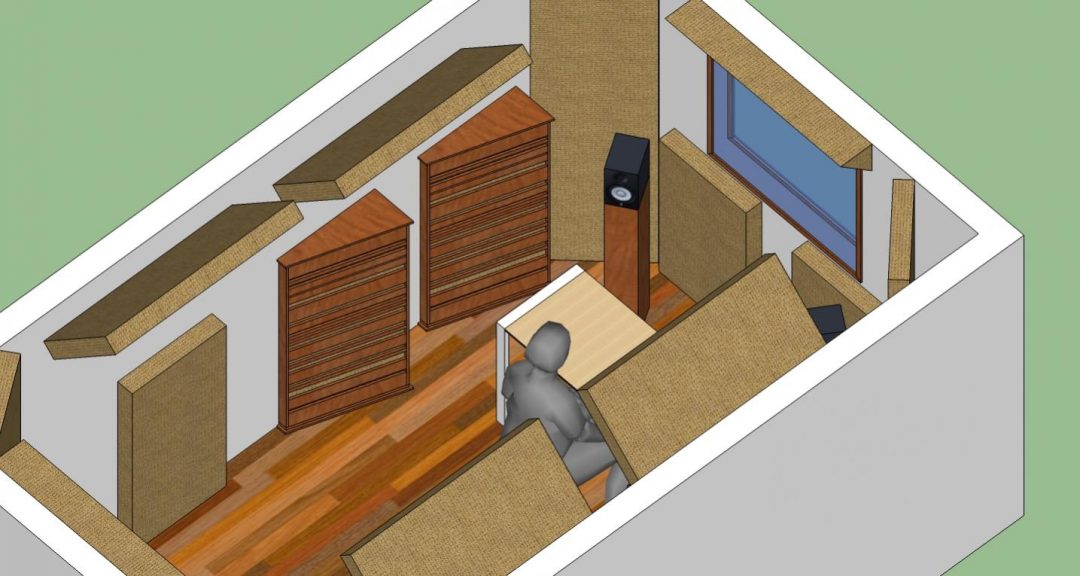Heya, I'm not new to play music, but I am new to recording music. I've been trying to read a lot on here, do my research, but I've gotten a bit overwhelmed and would appreciate some advice.
I just moved into a new apartment and want to make a spare room - approx 10.2ft x 8.6ft with 7 feet ceilings into a home studio. My new apartment is in an old London terrace building so volume is an issue. My desk, which the speakers will be on or standing near is 140cm.
I will do some treatment to the room, but realistically my options are limited as it is a small room and I can't massively overhaul it or my partner wouldn't be too happy with me.
I'd love some speakers that are good quality, flat response, for accurate recording and mixing etc. I play lots of instruments, guitar, bass, record synths etc, and am using virtual instruments a lot too. Put simply, I want to be able to plug things direct in (via my pedalboard) and record that way.
Initially I was thinking of some inexpensive speakers like the JBL 305's or Yamaha HS7's. I am also weighing up if to 'cry once' and go big on some very nice monitors like Genelec 8330's or Neumann KH 120 II's, and use their respective room correction software to help make up for my poor room acoustics.
I should also say, I'm not looking to get a separate sub if I can help it as my neighbours are already proving a careful navigation, so if the monitors can handle my bass guitar without a sub that'd be great.
What I'm confused by is which option to go with, hence the advice request. Some things I've suggested is that whilst my room remains poor, I'd be wasting money on fancy monitors and so should go with one of the cheaper options and do what I can do the room and see where that leaves me. Another set of suggestions I've read has been saying how good the room correction software is now it to a large degree can help with the poorness of my room, and so perhaps might be worth doing for that.
Put simply, I'm confused and would love some advice from anyone who can help nudge me in the wise direction. As mentioned, I'm happy to 'cry once' and spend more if that's the smart call, but if I'm not going to get the benefit, then why not save my money. Please let me know what you think!
Last thing I should say is that I am also planning on getting some Sennheiser HD600's for headphone mixing, so I will have that as a dual option.
I just moved into a new apartment and want to make a spare room - approx 10.2ft x 8.6ft with 7 feet ceilings into a home studio. My new apartment is in an old London terrace building so volume is an issue. My desk, which the speakers will be on or standing near is 140cm.
I will do some treatment to the room, but realistically my options are limited as it is a small room and I can't massively overhaul it or my partner wouldn't be too happy with me.
I'd love some speakers that are good quality, flat response, for accurate recording and mixing etc. I play lots of instruments, guitar, bass, record synths etc, and am using virtual instruments a lot too. Put simply, I want to be able to plug things direct in (via my pedalboard) and record that way.
Initially I was thinking of some inexpensive speakers like the JBL 305's or Yamaha HS7's. I am also weighing up if to 'cry once' and go big on some very nice monitors like Genelec 8330's or Neumann KH 120 II's, and use their respective room correction software to help make up for my poor room acoustics.
I should also say, I'm not looking to get a separate sub if I can help it as my neighbours are already proving a careful navigation, so if the monitors can handle my bass guitar without a sub that'd be great.
What I'm confused by is which option to go with, hence the advice request. Some things I've suggested is that whilst my room remains poor, I'd be wasting money on fancy monitors and so should go with one of the cheaper options and do what I can do the room and see where that leaves me. Another set of suggestions I've read has been saying how good the room correction software is now it to a large degree can help with the poorness of my room, and so perhaps might be worth doing for that.
Put simply, I'm confused and would love some advice from anyone who can help nudge me in the wise direction. As mentioned, I'm happy to 'cry once' and spend more if that's the smart call, but if I'm not going to get the benefit, then why not save my money. Please let me know what you think!
Last thing I should say is that I am also planning on getting some Sennheiser HD600's for headphone mixing, so I will have that as a dual option.

